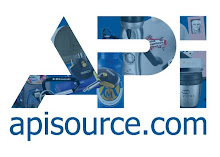It's a matter of human nature: When employees don't trust their leaders, they don't feel safe. And they don't feel safe, they don't take risks - and where no risk is taken, there is less innovation, less "going the extra mile," and therefore, very little unexpected upside. As a leader, you must model trustworthiness for everyone else. Here are some very specific things you can do to provide unusually excellent, trust-building leadership at your organization.
The Real Deal
Take Carl, a self-made success and CEO of a venture-backed software company, a great example. Carl had a PhD and held a senior management position but came from humble roots. In fact, Carl was the first one in his family to go to college. The stories Carl used when leading his team meetings were told from the heart about these humble beginnings. His team not only trusted him more because he wasn't afraid to show that side of himself, but they loved him for it.
Honesty Matters
Telling the truth when it is not convenient or popular, or when it will make you look bad, can be tough. Yes, it's essential to your reputation. Your task as a leader is to be as fourth right and transparent as is realistically possible. Strive to disclose the maximum amount of information appropriate to the situation. When you feel yourself starting to bend what you know is the truth or withhold the bare facts, find a new way to stop, reformat your communication and tell the truth.
No Guarantees
When an employee sees you committing any act of dishonesty or two-facedness, they'll assume that you'll do the same to them. They'll start thinking back through all of their conversations with you, wondering what was real and what was disingenuous.
Go Digital
When these are punished you instill fear of risk taking in your employees, and with that you stifle creativity and innovation. Instead, strive to create a "digital camera" culture. There is no expense associated with an imperfect digital photograph - financial or otherwise. You just hit the delete button. No wasted film, slides or prints. We are aware of this relationship between mistakes and the consequences when we pick up the camera - so we click away. We take many more pictures than we would in a world of costly film. Make the failures free. Because of this, people will take chances, and in that effort they will often get that one amazing picture that they wouldn't have if they were paying a price for all the mistakes.
The Fairness Doctrine
If you treat your followers fairly and do so consistently, you will set a pattern of behavior for the entire organization. This sense of fairness is critical to the creation of a safe environment, can be reinforced not only with fair practices but also by privately speaking to or if necessary, censuring - subordinates who behave unfairly to others.
One Bad Apple
That said, one huge mistake leaders make is to doubt or distrust someone because of their work performance disappoints us. Performance problems should be managed fairly and with little judgment of the persons underlying character, unless that is the issue at the root of the trouble. Ultimately, improving performance is merely a matter of feedback, course correction and some coaching.







No comments:
Post a Comment